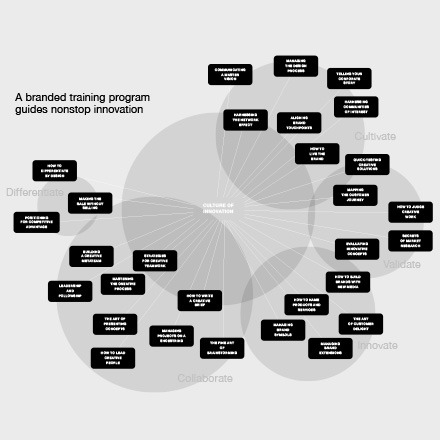Can you inspire innovation with a boring book?
Business books are almost universally dull, even when their subjects are fascinating. Our resident author Marty Neumeier has some fascinating things to say about boring books. He also has a new book that’s anything but.
Scramble by Marty Neumeier

Have you ever been bored into learning? I know I haven’t. One of my early professional idols was the graphic designer Milton Glaser. In 1975 he put it simply: “Boredom impedes perception.” Those three words changed my life. I resolved never to do anything the ordinary way, and I’ve stuck to my guns for forty years.
More often than not, this has led to out-of-the-ordinary results: memorable brand identities; campaigns that launched innovative products; annual reports that inspired greater investment; brand strategies that lifted companies out of obscurity. Sure, sometimes it might have been better to do things the ordinary way, but I was on a mission.
Whenever you turn the ordinary into the extraordinary, something amazing happens. People pay attention. They get inspired. They focus closely. And in some magical way, they open up to new experiences. The corollary to Glaser’s law that “boredom impedes perception” is that excitement inspires learning.
It’s with this in mind that I decided to buck the rules of business authoring. If you’ve seen my previous books, such as The Brand Gap and The 46 Rules of Genius, this won’t be surprising. But I’ve also decided to buck the rules of publishing.
Most people know that business authors don’t make their money from book sales. Business books are glorified brochures—a sample of what the author can provide as a consultant, professor, speaker, or workshop leader. In my case, they’re also expressions of how we work with clients at Liquid.
Publishers, on the other hand, need to sell books. Lots of them. The narrow audiences of thought leaders don’t serve this purpose, nor do authors who aren’t already mainstream celebrities. This puts publishers and thought leaders at odds. Publishers are interested in sales; business authors are interested in influence.
Therefore, after 15 years of traditional publishing, I’m going rogue. I’ve decided to approach my new book, Scramble, as an opportunity to innovate. I’ve applied the principles at the heart of the book—a planning approach called agile strategy—to the problem of how to reach the right audience in the right way.
To start with, I wrote the book as a thriller. I’ve found that people learn better with rich, nuanced stories. Ordinary case studies can’t illuminate the inner game of business—the doubts, the setbacks, the emotions, the frustration, the difficulty of collaborating under the pressure of deadlines. A human story makes a better vehicle.
Next, I wrote the book in full view of my colleagues and followers, learning from their feedback as I went, chapter by chapter. If the situations and scenes seem uncannily familiar, it’s because many of them came from the real-life experiences of my unofficial advisors.
Finally, I’ll be “hand selling” the book. In today’s world this means introducing it through indie podcasts, LinkedIn posts, online conferences, and “weaponized” word of mouth. I’ve started a lean publishing company called Level C Media to make this happen.
On October 1, Scramble will be available at two distribution points: Amazon worldwide and 800-CEO-READ in the United States. Amazon will offer a mass-market paperback, an ebook, and an audiobook; CEO-READ will offer a deluxe softcover at a discounted price. The latter version is the “director’s cut,” a book specifically designed for discriminating readers of print books.
If you’d like to help me spread the word, you don’t have to wait for October 1. Sign up as an Scramble Advocate on my author website, and get a free advance copy of the ebook immediately.
In my next post, I’ll describe the basic story of Scramble, along with the “Ps and Qs” of agile strategy. Later, I’ll be thanking some of the amazing people who have come along with me on this ride.
By Marty Neumeier

